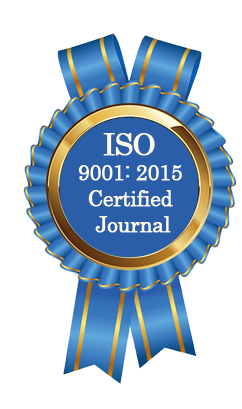| All | Since 2020 | |
| Citation | 105 | 60 |
| h-index | 4 | 4 |
| i10-index | 3 | 2 |
WJAHR Citation 
Login
News & Updation
Best Article Awards
World Journal of Advance Healthcare Research (WJAHR) is giving Best Article Award in every Issue for Best Article and Issue Certificate of Appreciation to the Authors to promote research activity of scholar.
Best Article of current issue
Download Article : Click here
Indexing
Abstract
MORPHOLOGICAL DIFFERENTIATION OF RHIPICEPHALUS BOOPHYLUS ANNULATUS, RHIPICEPHALUS BOOPHYLUS MICROPLUS AND HYBRIDS POPULATIONS COLLECTED IN NORTHERN CÔTE D'IVOIRE
M’Bari K. Benjamin*, Gragnon B. Guillaume, Kouassi Y. J. M. Privat, N’Goran K. Edouard and Gbati O. Bassa
ABSTRACT
In order to differentiate 3 different tick populations, 301 specimens of tick belonging to Rhipicephalus Boophilus genuses were taken from cattle farms located in northen Côte d’Ivoire. For this work, 101 specimens of Rhipicephalus Boophilus microplus, 100 ticks of R B annulatus and 100 ticks with the characteristics of species named were submitted to a morphometric study. This study, based on 5 morphological descriptors made it possible to verify the homogeneity within and between all studied tick groups. This work confirms the natural hybridization of R B annulatus and R B microplus ticks on cattle farms in northern Côte d'Ivoire. In addition, analysis of the morphometric traits retained revealed intrapopulation heterogeneity (CV> 15%) for all 3 tick groups. On the other hand, at the multivariate analysis level, it emerged that 4 of the 5 descriptors used were significantly discriminating. It was about the waist Length (Lt), Length of the capitulum (Lca), Length of the opistosome (Lop) and Length of the legs (Lpa). These descriptors allowed highlighting the existence of 2 groups morphologically distinct from each other. These groups were constituted in one hand by R B microplus specimens and the other hand by R B annulatus ticks. The Mahanobis distance between those groups were 15.26% while those of hybrid group and each of R B annulatus and R B microplus were respectively 4.23 and 6.01. The third ticks group was morphologically closer to R B annulatus than R B microplus. Moreover, at aggregation distance 10, each group consisted of subgroups, which confirmed ticks intragroup heterogeneity but also raised questions about the possibility of hybridized ticks of different generations in each groups. This sentence must be deleted. To do this, subsequent molecular studies on specimens from these 3 tick groups would be needed to confirm this hypothesis.
[Full Text Article] [Download Certificate]
